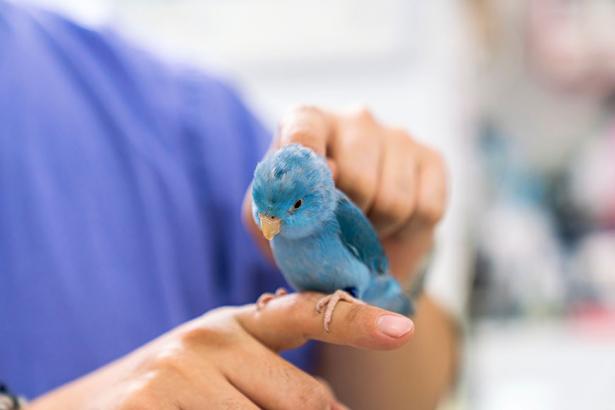Understanding the behaviour of exotic pets is essential for providing them with proper care and ensuring their well-being. Unlike domesticated animals, exotic pets – such as reptiles, birds, amphibians, and small mammals – retain many of their natural instincts, which can sometimes make their behaviour seem unpredictable or challenging for pet owners.
As a veterinarian, I’ve worked with a diverse range of exotic species and have seen firsthand how behaviour is influenced by factors such as environment, social structure, and evolutionary instincts. In this article, we’ll explore the science behind exotic animal behaviour and what it means for owners looking to provide the best possible care.
Instincts vs. Learned Behaviour in Exotic Pets
Exotic animals exhibit a mix of instinctive and learned behaviours. Unlike dogs and cats, which have been selectively bred for thousands of years to live alongside humans, exotic pets are still closely tied to their wild ancestors. Their behaviours often serve specific survival functions, whether in the wild or in captivity.
- Instinctive Behaviours: These are hardwired into an animal’s biology and include actions like hunting, hiding, or territorial displays. Even when an exotic pet has never encountered a predator, they may still react defensively to perceived threats.
- Learned Behaviours: These are acquired through experience or training. Birds, for example, can learn commands and mimic human speech, while some reptiles can associate certain cues with feeding time.
Understanding whether a behaviour is instinctive or learned helps pet owners manage expectations and create an environment that encourages positive behaviours while minimising stress.
Common Behaviours in Exotic Pets and Their Explanations
1. Reptile Behaviour: Understanding Territoriality and Thermoregulation
Reptiles, including snakes, lizards, and turtles, display a range of behaviours that are primarily influenced by their need for warmth, safety, and dominance.
- Basking and Hiding: As ectotherms, reptiles rely on external heat sources to regulate their body temperature. Basking under a heat lamp is essential for digestion and energy levels, while hiding is a natural response to feeling threatened or wanting to conserve heat.
- Head Bobbing and Puffing Up: Lizards such as bearded dragons perform head-bobbing as a form of communication, often related to dominance or courtship. Similarly, puffing up the body or extending a throat pouch (as seen in frill-necked lizards) is a defensive display to appear larger and more intimidating.
- Tail Rattling or Curling: Some reptiles, like snakes, use tail movements to warn predators or communicate distress. Owners should be aware that these signals often indicate fear or agitation.
Providing a proper habitat with temperature gradients, hiding spots, and enrichment activities helps to ensure reptiles feel secure and exhibit natural behaviours.
2. Bird Behaviour: Intelligence and Social Dynamics
Birds, particularly parrots, are among the most intelligent exotic pets. They have highly complex social structures and require significant mental stimulation to thrive in captivity.
- Mimicry and Vocalisation: Many birds, such as cockatoos and lorikeets, mimic sounds as part of their social communication. In the wild, this helps them bond with their flock; in captivity, it’s often an attempt to interact with their human owners.
- Feather Plucking: This can be a sign of stress, boredom, or illness. Birds that lack mental stimulation or suffer from social isolation are more prone to self-destructive behaviours.
- Beak Grinding and Foot Tapping: Beak grinding, often seen in parrots, is a sign of contentment and relaxation, while foot tapping (in species like cockatoos) can be a form of communication or play.
Birds require regular interaction, foraging activities, and plenty of space to fly and exercise to prevent behavioural issues.
3. Amphibian Behaviour: Nocturnal Patterns and Moisture Management
Amphibians, such as frogs and axolotls, have specific behavioural patterns tied to their need for moisture and nocturnal lifestyles.
- Burrowing and Hiding: Many amphibians bury themselves in substrate or hide under rocks to retain moisture and regulate body temperature.
- Nocturnal Activity: Most amphibians are more active at night, which is why owners may not see much movement during the day.
- Vocalisations: Male frogs often call out to attract mates, and some species use vocalisations to establish territory.
Providing appropriate humidity levels, hiding spots, and a diet that supports nocturnal hunting behaviours (such as live insect feedings) is crucial for amphibian health.
4. Small Mammal Behaviour: Social Structures and Burrowing
Small exotic mammals, including sugar gliders, ferrets, and guinea pigs, have highly social and active lifestyles that require proper management.
- Burrowing and Nesting: Many small mammals instinctively dig or build nests to feel secure. Guinea pigs, for instance, create tunnels in their bedding to mimic their wild burrows.
- Scent Marking: Ferrets and rabbits mark territory using scent glands. This is a natural behaviour, but it can be managed through proper cleaning and providing adequate space.
- Play and Interaction: Rabbits thrive on social interaction and mental stimulation. They should be given opportunities to engage in play and interact with their owners or other compatible rabbits to prevent stress.
Understanding these behaviours helps owners provide a suitable environment and avoid common issues such as loneliness, aggression, or stress-related illnesses.
The Role of Environment in Shaping Behaviour
One of the most important aspects of exotic pet behaviour is how their environment influences their actions. Inappropriate enclosures, lack of enrichment, or exposure to stressors can cause abnormal behaviours, including:
- Stereotypical Behaviours: These include pacing, excessive grooming, or repetitive movements often caused by boredom or confinement.
- Aggression or Fear Responses: A stressed pet may become aggressive or excessively timid, hiding for prolonged periods or refusing to eat.
Providing an environment that mimics their natural habitat as closely as possible is key to maintaining healthy behavioural patterns. This includes:
- Offering proper lighting, temperature, and humidity levels for reptiles and amphibians.
- Ensuring birds have ample space to fly, toys for mental stimulation, and daily social interaction.
- Allowing small mammals to engage in natural behaviours like burrowing, climbing, and socialising.
How Veterinarians Can Help with Exotic Pet Behaviour
As veterinarians, our role extends beyond medical care – we also educate owners on how to interpret and manage their pets’ behaviours. Behavioural consultations can help identify stressors and provide solutions, such as:
- Adjusting the pet’s environment.
- Offering dietary recommendations to support natural feeding behaviours.
- Providing training strategies to encourage positive interactions.
Understanding exotic pet behaviour not only improves their quality of life but also strengthens the bond between owners and their animals.
Concluding Remarks
The behaviour of exotic pets is deeply rooted in their natural instincts. While they can adapt to life in captivity, their needs must be met to ensure they remain healthy and mentally stimulated. By recognising instinctive behaviours, creating appropriate environments, and seeking veterinary guidance when needed, owners can provide a fulfilling life for their exotic pets.
At Currumbin Vet Services, we specialise in exotic pet care and can help owners understand and support their pet’s natural behaviours. If you have concerns about your pet’s behaviour or need advice on proper husbandry, schedule a consultation with us today.





